Types of Acne
The start of acne
The hair pores, in your skin contain oil glands. These glands make oil that lubricates your hair and skin. Most of the time, the oil glands make the right amount of oil. As a teen's body begins to mature and develop, hormones stimulate the oil glands to make more oil, and the glands may become overactive. Pores become clogged if there is too much oil and too many dead skin cells. Bacteria can then get trapped inside the pores and multiply, causing swelling and redness — the start of acne.
Why learn all these types and names when all you really want is clear skin?
Because the best way to fight
back is by arming yourself with knowledge. In addition, it's important to know exactly what
type or types of acne you have, because each type is treated differently.
Skin care experts classify
acne in to different categories based on severity or appearance or area of the
body affected. Whiteheads vs. Blackheads, papules vs. Pustules, nodules Vs. cystic; mild, moderate and severe
etc...
Acne vulgaris - The most common types of acne
This
is perhaps the most common types of acne that people suffer from and it is most
easily identified. It usually begins during puberty, but often extends into
twenties thirties and beyond. It is most
common on the face, neck, chest and back but it can appear all over the body.
There are about five different types of acne lesions that are common in acne
vulgaris;
Whiteheads are called closed comedones.
They typically appear on your skin as small, whitish bumps. It result from a pore that is blocked completely.
The trapped oil, bacteria, and dead skin cells cause a white head to form on
the skin’s surface. They are often treated with over-the-counter acne products.
Technically blackheads are called open
comedones. It is created when
a follicle in your skin becomes plugged and pushes through the surface. The trapped bacteria, oil, and dead skin slowly
drains to the surface of the skin to form a blackhead. The dark color is caused
by melanin in the skin reacting with oxygen. Blackheads typically take a longer
time to clear than whiteheads.
Nodular acne appears in large areas of your
skin and is usually very painful. Severe acne often causes nodules. Acne nodules are hard bumps under the
skin that may be large and last for months. Scarring is a common side effect of
nodular types of acne.
Cystic acne is the most severe form of acne
vulgaris. It is deep, inflamed breakouts develop on the face and/or other areas
of the body. Cystic acne
lesions are far more painful and have more risk of scarring.
The blemishes themselves can become large.
Papules are small, firm cone-shaped bumps
that are pink or red in color and have no
head or pus. Since they don’t contain pus, you should never
pop or poke them. If you do you might seriously irritate your skin and
aggravate your existing pimples and
possibly end up with a permanent scar.
Like papules, pustules are small, round
lesions. You’ll notice they’re red in color with yellowish or whitish centers. It is the most
common types of acne lesion. They can be popped at home using sterile materials.
Acne medications may be more effective after the pustule has been popped.
Acne Grading
Acne vulgaris is also classified (Graded) as mild acne, moderate acne or severe acne based on severity, which is used as a basis for selecting treatment:
Mild acne
|
Moderate acne
|
Severe acne
|
Acne conglobata
Acne conglobata is an uncommon and very severe form of acne
that can affect your back, buttocks, chest, shoulders, upper arms, thighs, and
even your face. It is a very severe form of acne vulgaris.
It usually presents itself as large lesions that may be interconnected. if
you think you have acne conglobata, see a dermatologist as soon as possible.
Acne mechanica
It
is a form of acne common in young athletes, students, soldiers, and others. It
is caused or aggravated by heat, covered skin,
constant pressure and repetitive friction against the skin.
Acne mechanica can occur anywhere on the face or body.
Acne inversa
Acne inversa is a chronic inflammatory skin
disease characterized by painful nodules, pustules and abscesses. The causes of
the disorder are thought to be linked to autoimmune disease. It can be made
worse by obesity, eating an inflammatory diet, or smoking.
Acne fulminans
Acne fulminans is a rare and very severe
form of acne conglobata associated with systemic symptoms. This type of acne often becomes ulcerated and
severe scarring is common. It is characterized by its spread to
other systems of the body beyond the skin, causing severe inflammation of
joints and the swelling of the lymph nodes. It usually doesn’t respond to standard acne treatments.
Gram-negative folliculitis
Gram-Negative
Folliculitis is a rare bacterial infection that is characterized by cysts and
pustules. Some dermatologists believe that it develops in patients who have received
systemic antibiotics for prolonged periods.
Acne rosacea
Acne Rosacea is a skin disorder usually
present as a red rash confined to the nose, cheeks, chin, and forehead.
Typically it begins during adulthood. Acne Rosacea is often confused with acne vulgaris because they are
similar in appearance.
Pyoderma faciale (Rosacea fulminans)
Pyoderma
Faciale is
a rare but extremely serious skin condition that only affect women. It is
characterized by severe, sudden onset acne-like cysts, nodules, and pustules,
which are painful and disfiguring and only presents itself on the face. It can affect women who have not
had any previous acne issues. This condition may cause severe scarring,
especially if left untreated.
More from The web:
Home › Types of Acne
Tags
comedones, over-the-counter, scarring, blemishes, severe acne, cysts, nodules, pustules
Irresistible Acne Remedies. This free newsletter is delivered monthly, straight to your INBOX. It covers all new pages since the last issue. Sign up here...


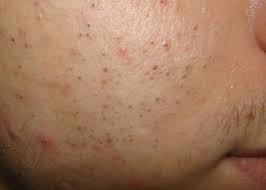
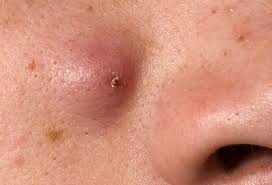
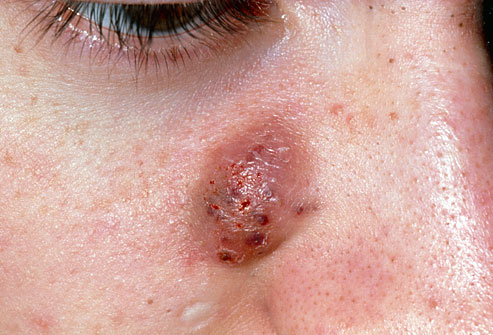
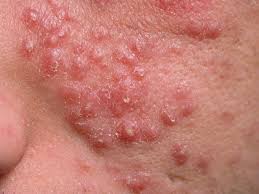
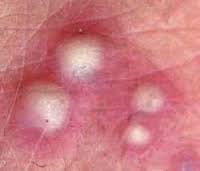
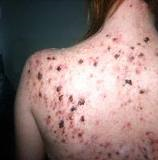

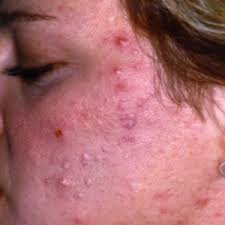
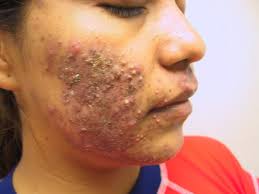
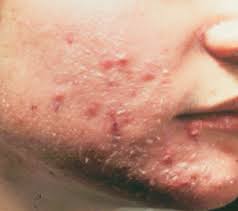
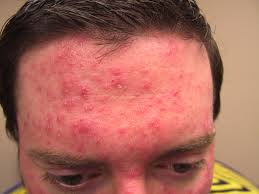
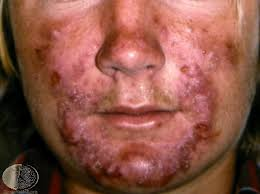
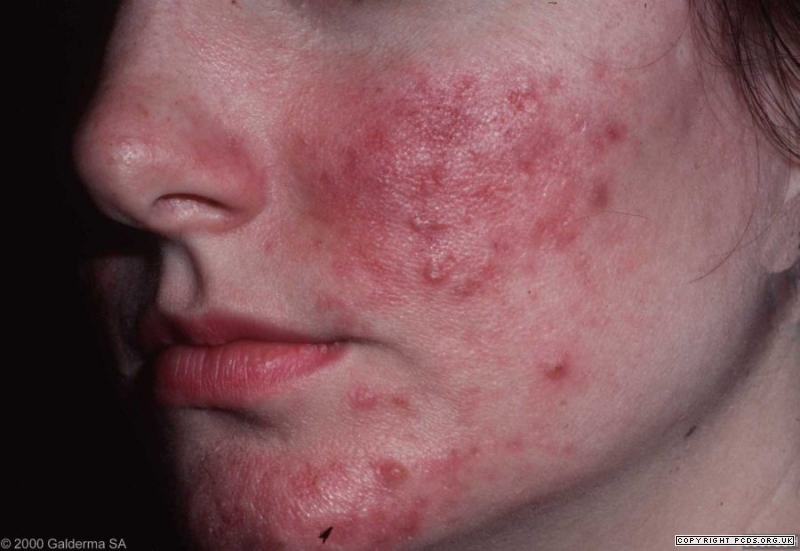

New! Comments
Have your say about what you just read! Leave me a comment in the box below.